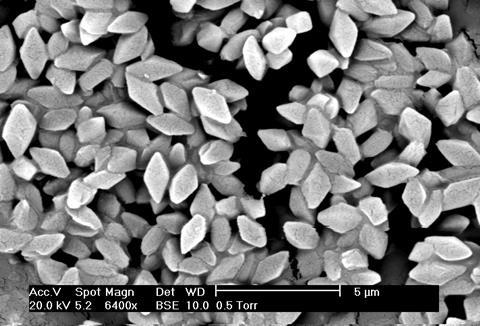If left unchecked, insect pests can devastate crops. To minimize damage and reduce the need for insecticide sprays, crops have been genetically engineered to produce bacterial proteins that kill key pests but are not harmful to people or wildlife.

However, widespread planting of such transgenic crops has led to rapid adaptation by some pests. A new study, ’Mismatch between lab-generated and field-evolved resistance to transgenic Bt crops in Helicoverpa zea’, in the Proceedings of the National Academy of Sciences reveals a novel genetic basis of resistance to transgenic crops in one of the most important crop pests in the United States.
READ MORE: Chloroplast manipulation: A new strategy in pathogen warfare uncovered
READ MORE: Scientists discover genetic defense against Huanglongbing disease
Researchers from the University of Arizona Department of Entomology in the College of Agriculture, Life and Environmental Sciences used genomics to investigate the genetic changes causing resistance to transgenic crops in field populations of the corn earworm, also known as cotton bollworm or Helicoverpa zea. They discovered that in this voracious pest, field-evolved resistance was not associated with any of the 20 genes previously implicated in resistance to the pest-killing proteins in transgenic crops.
Challenging pest
“The corn earworm is one the world’s most challenging pests in terms of its ability to quickly evolve resistance in the field to genetically engineered crops. We identified 20 genes that harbor mutations conferring resistance to pest-killing proteins based on previous work with lab-selected strains of corn earworm as well as resistant field populations and lab strains of other lepidopteran pests,” said senior study author Bruce Tabashnik, head of the U of A Department of Entomology.
“We call these 20 genes ‘the usual suspects.’ Contrary to our expectations, in seeking the culprit for field-evolved resistance of corn earworm, none of the usual suspects were guilty.”
Never-ending battle
To gain protection from the corn earworm and some other major caterpillar and beetle pests, crop plants have been genetically engineered to produce proteins from the common bacterium Bacillus thuringiensis, or Bt. Unlike broad-spectrum insecticides, Bt proteins are active against relatively few insect species. Whereas broad-spectrum insecticides are nerve poisons, Bt proteins can exert toxicity only if they are eaten and subsequently bind to specific gut receptors that are absent in most non-pest species, including humans.
Because of their efficacy and safety, Bt crops are grown in dozens of countries on more than a quarter billion acres each year. In the United States in 2024, Bt varieties accounted for 86% of the corn and 90% of the cotton planted. However, evolution of resistance by pests such as corn earworm has decreased the benefits of Bt crops.
The corn earworm is one of the most economically significant pests in the United States, causing hundreds of millions of dollars in damage and costs annually. It attacks a wide range of crops, including corn, cotton, soybean and tomato.
Twist in the DNA
To analyze the genetic basis of field-evolved resistance of corn earworm, the U of A researchers collaborated with colleagues at Texas A&M University who had used bioassays to evaluate resistance by testing insects derived from the field.
“Bioassays are used routinely to determine if insects are resistant by exposing them to Bt proteins in the lab,” said study co-author and U of A entomology professor Luciano Matzkin.
After bioassays are completed, the insects tested are usually discarded. In this innovative partnership, the insects from bioassays conducted at Texas A&M were frozen and sent to the U of A for DNA extraction and sequencing to enable scanning the entire genome for genetic differences between the resistant and susceptible corn earworm caterpillars. Including some previously sequenced specimens, the genomic analysis included 937 corn earworms from 17 sites in seven states across the southern United States, sampled from 2002 to 2020.
Cluster of genes
“We carefully examined 20 genes that affected how pests responded to Bt proteins in previous studies. Our evidence indicates changes in these genes are not causing resistance to Bt crops in wild populations of the corn earworm,” explained Andrew Legan, a postdoctoral fellow at the U of A and first author of the study. “Instead, we found resistance was associated with a cluster of genes that was duplicated in some resistant field populations. But it remains a mystery as to how many of these genes contribute to resistance and how they confer resistance.”
Despite not narrowing the cause of resistance to a single gene, researchers say the study provides an important reminder that the genetic basis of resistance can differ between the field and lab. This is a critical caveat for developing tools to monitor resistance in the field. The results also demonstrate how bioassays can be used with genomic analyses. As the study illustrates, genomic analyses of resistant and susceptible insects preserved from routine monitoring bioassays can help elucidate the genetic basis of field-evolved resistance, while the bioassay results can immediately determine the status of resistance in the field and help facilitate management decisions.







No comments yet